HOW TO RECORD ACOUSTIC INSTRUMENTS / tips & tricks
Reviewing and mixing the work I'm doing right now always gets me thinking about the tips and tricks I've learned from many different people over the years on how to record a certain acoustic instrument. Recording acoustic instruments is a lot harder than recording something that can be plugged into an amp or a sound card and no matter what you record, there are always a few things to keep in mind. So here are a few tips you can use when recording an acoustic instrument to make sure you get a decent sound every time, no matter what the quality of the instrument is and no matter what the sound properties of the room you are recording in are like.
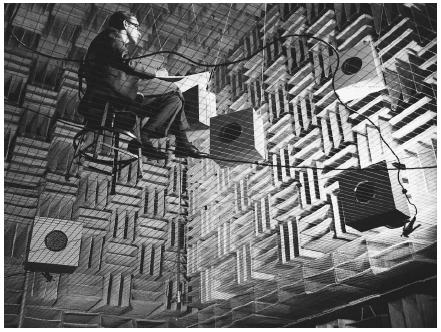
(this is an interesting photo I've found online of a guy listening to music in a specially designed room; BellTelephone Laboratories, 1965. I can only imagine what it must feel like to listen to music in such a room.)
USE THE ROOM AS AN INSTRUMENT
This is the first thing I tell people when I talk about recording. These days semi-pro studios are more affordable than they used to be so musicians can work in an environment designed for recording for a fairly low price. Although that's generally a good thing, it has a not-so-good side to it. Many studios that people can afford use the exact same principals of acoustic management inside their session rooms which in turn makes all the artists recording there sound exactly the same. If you have a room filled with the same kind of sound absorbing materials on the walls and the same kind of standard recording equipment one mostly sees around, artists will end up sounding too similar. The problem is that most of those rooms ''kill'' the natural, specific and unique sound of every particular instrument so it doesn't really matter what kind of a guitar you bring in or what kind of strings or amps you use. If everything is recorded with the same equipment in the same kind of place, it can only sound - the same. There's a reason why this is happening and there is also a way around it. This started happening when recording switched from live to pro-channel (a thing I was mentioning in a previous post). When people had to record a band live, they had to sort of ''work with the room'', see what the room does to the sound, why it is specific, where is the best plays to set up a certain instrument based on the acoustic properties of the room you were in and how can the specific sound of the room be used later in production. When the switch from live recording to pro-channel recording happened, the idea was to record everything separately, as clean and as neutral as possible so you can manipulate the singal later any way you want. That meant that the ''the specifics of the room'' had to get out of the equation. If you want a separate, clean, neutral signal, it has to be recorded in an acoustically neutral room. That's how the session rooms we see today came about. Those room are perfect for recording but then again, they are not. Although you can record anything you want in them perfectly, they don't ''add'' anything to the overall sound of the artist yozu are recording. They are so neutral you don't even feel they were there. Think ybout it - can you imagine a room the new hits you hear on the radio were recorded in when you listen to them?
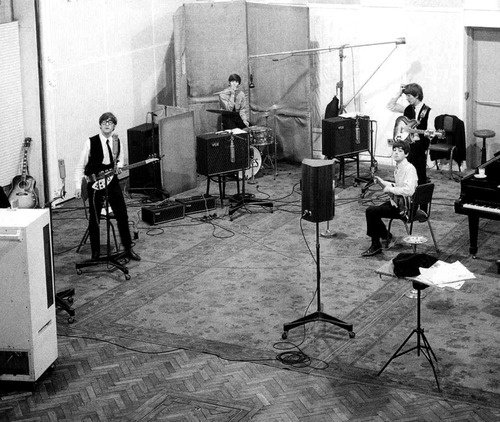
(the Beatles in Abbey Road Studio)
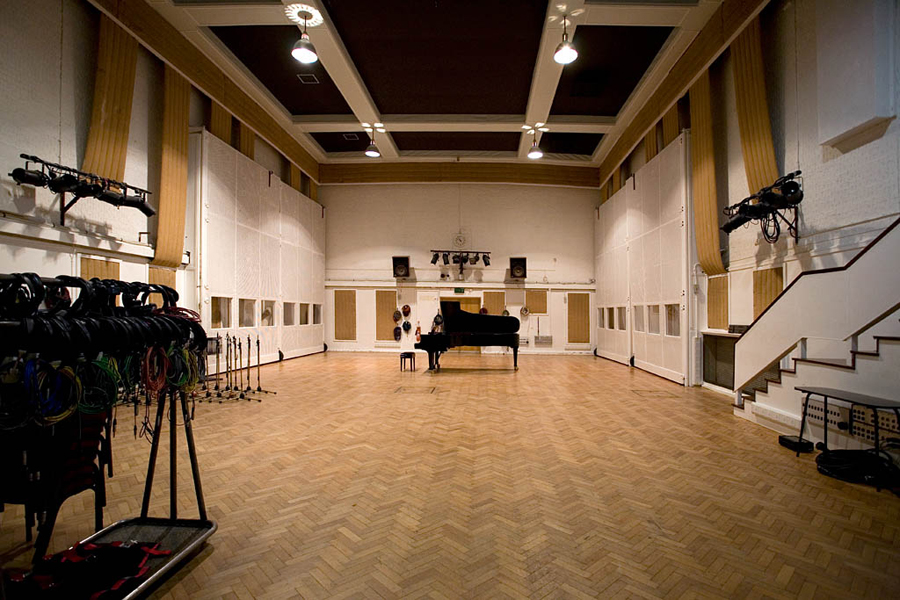
(Abbey Road Studio today.)
The point I'm trying to make is this - a big part of why the Beatles sound like the Beatles is the room at the Abbey Road Studios and that's why McCartney is still recording there today. The Abbey Road Studio sounds like Abbey Road Studio.
ACOUSTIC GUITAR
One of the instruments I record the most is the acoustic guitar. It's because I work with many singer-songwriters (and I am one as well), because an acoustic guitar continues to be popular today and because it is used for many different kinds of music, either as a main instrument or as a backdrop. At first, I've had a lot of trouble recording acoustic guitars. I learned quickly that every acoustic guitar sounds completely different for itself (even if it's the same model, same series, same year), depending as well on who is playing it, how it is played and what kind of strings it has on. So I did a bit of thinking and a bit of experimenting and here is what I've found. Every room has a unique spot that works best for an acoustic guitar. I've tried sitting down in different spots inside my work area, recording the guitar with the exact same mic and the exact same mic set up. It quickly became clear the guitar sound changes as I go about the room even with the mic set up being the same. So, TIP NO. 1 - find that sweet spot in your own session area. TIP NO. 2 considers the mic set up. Although an individual approach is the best (as always) there's a trick on how to get a decent acoustic guitar sound. First, use a condenser microphone. If you don't have one, get one. The best place to set up your condenser mic while recording an acoustic guitar is on the 12th fret. The 12th fret is a spot where the microphone will record a nice balance between the low and, the middle end and the high end of the guitar and it will also record the sound of the fingers and the distinct sound of the strings. Try to move the mic back and forth from the 12th fret to hear how the sound changes. If you happen to have two condenser mics, put them both on the 12th fret so one is vertically on top of the other. That will provide the best possible acoustic guitar sound recorded in any room with any kind of equipment.

(this is what I mean; found this online)
CELLO
Another instrument I deal with most of the time is the cello. The cello is very popular in pop music and people use it a lot for the emotional slow-tempo songs because it has this sad feeling to it. It can also be used instead of a bass guitar or a synth and it works great in folk genres etc. The cello is a tricky one. It's relatively big, the player need a fair amount of space to sit and the mic must not get in the way of the bow. A beautiful thing about the cello is that it resonates with its entire body and it has this sweet, velvety, soft sound in the low end you don't get to hear from other instruments. Taking this into accound, there are a few common ways of recording a cello. So, TIP NO. 1 - the microphone should be facing the middle spot of the cello, the place where the bow touches the strings. That's because all the frequencies you want to get are well presented within that area. TIP NO. 2 - put the mic further away from the cello than an acoustic guitar (I don't have the exact number of inches, but just listen to it) because that way you will capture the sound of the cello resonating in the room better or in other words, the sound will be richer.
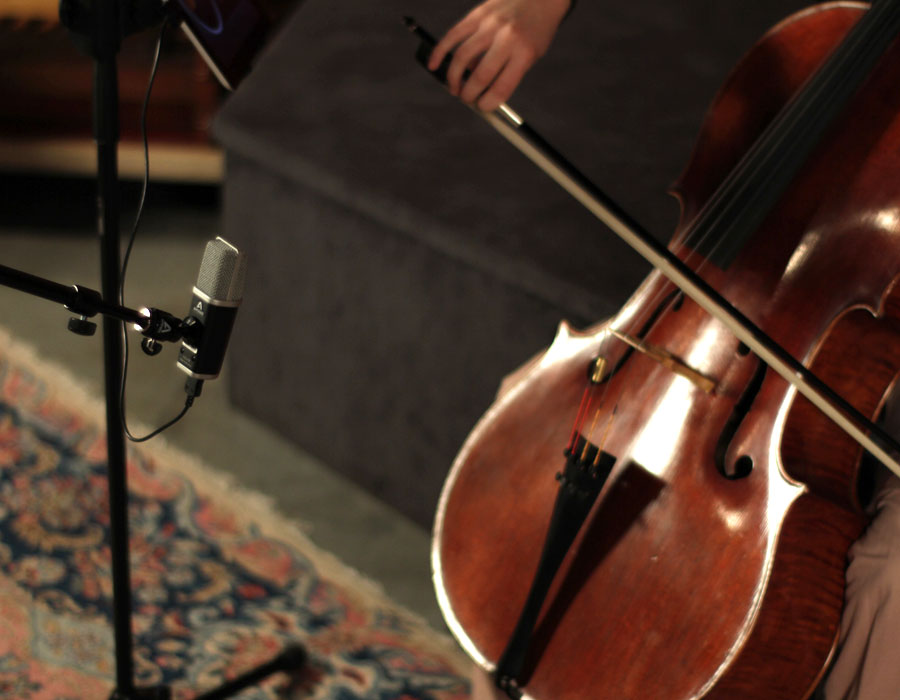
(something like this)
If you happen to have an extra mic, put it above the player, facing the neck. You will get a bit more of a high end and you might get a better sound of the glisandos and the vibratos, depending on the playing style.
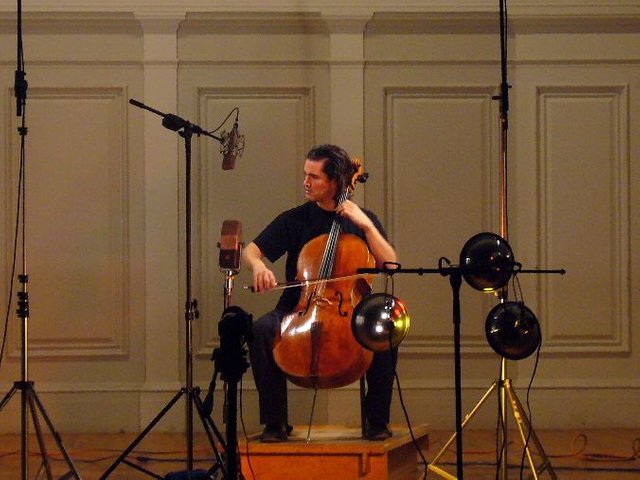
(something like this)
THE PIANO
This is the one I've really only tried once. I love the piano. I learned piano for a couple of years in a music school before I dropped out but I am still in love with it today and love to play it. I wrote a couple of piano based songs for the album ''Violence and Sorrow'' with my band Moskau and I was lucky to record it myself. I used a semi-concert piano located in a theatre in my home town. The acoustic properties of the place were great because it is a theatre and I called up one of my fellow musicians who had experience with recording the piano to help me out. What I learned was this: if you want to get a rich, full sound of the piano, it must be recorded with at least two mics. Unlike the cello or the acoustic guitar, the best way to record the piano is to use dynamic mics. In my case, I used two vintage AKG dynamic mics that my fellow musician brought for the occasion. TIP NO. 1 - take the top up and find the center. The best way to find the center of the soundboard is to listen to it resonating while somebody else is playing. The center of resonance is not always the dead geometrical center of the soundboard so you just have to listen for the best spot. TIP NO. 2 -place the two dynamic mics into an X stereo position, hitting the center spot. You can sort of do that by ear and by eye but make sure how your phases react. Now, I'm not going to get into the entire ''what's a phase'' thing because it's too long. All I can say is, if your phases are off, you will get this chorus sound you don't really want. The best way to make sure if your phases are right is to use a STEREOMETER and see whether the phases interlock or not. If they don't, you're fine.
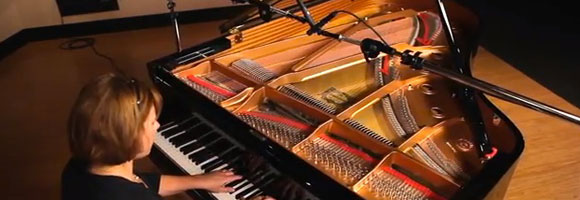
(here's what that's supposed to look like)
There are many ways of recording a certain acoustic instrument and these are just the most simpe ones I've learned that work best in an unprofessional situation. So if you ever decide to experiment with recording these instruments, try this out and see what you get. It all depends on the type of mic you use and the kind of room you record in, but it should be a sure way of getting a decent sound. As always, feel free to ask anything in the comments!
Due to some limitations of time, space, money, and the ability to get it right in a reasonable number of takes, I haven't recorded anything in quite some time, but I've been thinking about it more recently, and this is a great no-nonsense, no-jargon place to start. For real, any and all musicians--especially people starting out--should be following you.
I'm curious--what's your normal set up for vocals?
Again, thank you.
I don't really have a special set up for the vocals. I do try to record the vocals with the best possible signal that is on the verge of going into peak and I tend to record vocals both with a condenser and a dynamic mic at the same time because the dynamic mics often give more low end to the vocals so I put that track underneath the condenser track, rather than EQing just one track to get the full frequency spectrum. I do have a universal EQ/compressor set up that I use on all my vocals. It's a setup I made for the specific mic I use and it is sort of a starting point when I mix the vocal. Also, if the EQ/setup is already in place when the recording is happening, it helps me get the idea of what kind of mixing is going to be needed for that particular vocal and that enables me to work faster later.